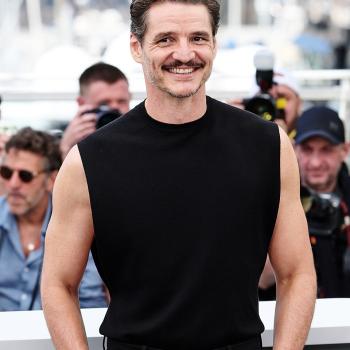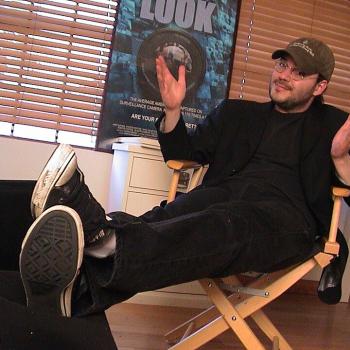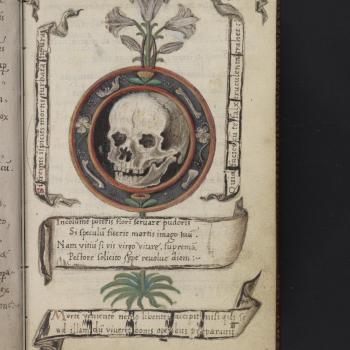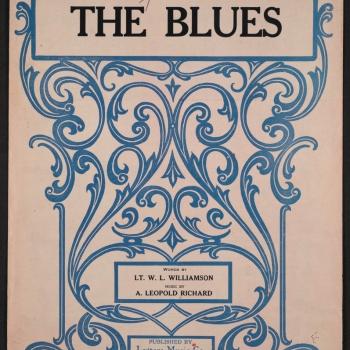
Source: Flickr, Richard Giles
It ain’t easy to watch movies when you’ve got a new puppy and there’s something decaying in your crawlspace. It’s upsetting my asthma. We think it’s a mouse. The pest control guy is supposed to be here soon. Either way, it turns out if a teething puppy smells something that rank, he’ll spend countless hours trying to claw through your carpet, pulling up rugs and trying to tear out their innards like a buzzard getting ready for a banquet on Route 66. Try paying attention to a film under those conditions.
And yet promise weekly reviews I have—and so weekly reviews, I shall deliver.
Did I watch Ari Sandel’s The DUFF (2015)? I was physically present in front of a television on which it was playing. Occasionally, I could even squint my mouse-gas blearied eyes just enough to make out a joke. I did, however, do my best (to quote one of my favorite and underappreciated YouTube accounts), for YOU the PEOPLE. “DUFF” stands for “Designated Ugly Fat Friend”—each high school clique is supposed to have one. Bianca Piper (Mae Whitman) realizes she’s the one in her group, panics, and turns to her childhood friend turned cool jock, Wesley Rush (Robbie Amell) for help in recovering and asking out her crush, Toby Tucker (Nick Eversman). Nothing too fancy from there—she finds out Toby is using her to get to her hot, popular friends, Casey (Bianca Santos) and Jess (Skyler Samuels). She and Wes fall in love and have to overcome the machinations of his on-again-off-again girlfriend, Madison (Bella Thorne). But don’t worry—they vary things up! The big romantic finale is set at homecoming, not prom.
What’s worth reflecting on in The DUFF is bound up in when it was made—2015, that year of transition, when Millennials still reigned culturally supreme, but we were only a year or two from Gen-Z domination. Facebook was still the primary social media platform, not just one for old people. Instagram and YouTube—neither was yet the dominant force in cultural production it is now. Lord knows there was no TikTok (but there was YikYak!). Presinald Trunt, as Presinald Biden (allegedly) once called him, hadn’t yet inalterably altered our political landscape. Gamergate was in the past, yes—but the wars over wokeness were in their infancy, reduced to fights over whether race scientists should be allowed to present whitepapers at Oberlin. We had no idea what monster slouched, etc.
In this sense, the movie is a lovely cultural artifact. For starters, the name: Designated Ugly Fat Friend? I’m no high school guidance counselor, but I assume saying that to someone in a suburban high school post-2018 will get you sent away to sensitivity training. Mae Whitman is also, in no way shape or form ugly or fat (or even particularly overweight, or as my grandmother might say, “heavy”). It’s clear she was chosen because, despite being fairly thin, she’s got a round-ish face. While not quite Kendall Jenner Pepsi ad stuff, that kind of aggression will not stand now, man.
The movie starts strong by recognizing the breakdown in old-fashioned teen stereotypes (now jocks can play video games and nerds can work out and girls can, I don’t know, be attractive and be on the robotics team). I appreciated this quite a bit; it’s something media tends to gloss over, the ways in which it’s cool to watch anime now, or how being a hot gamer is a cottage industry unto itself. But then it squanders the whole opportunity—because the film needs cliques to work, even though it also needs cliques to be more complicated than they traditionally have been. As a result, her friend group makes no sense: a hot hacker, a DUFF cult movie fanatic, and a self-assured fashion designer (somebody stop her before she gets started—the fashion is another mark that this film comes from the pre-Gen Z age. Lord have mercy). In his most famous work, Undergrads, writer Josh A. Cagan bound four weirdo friends together by, well, being weirdos. We need a reason to believe people, different as they are (and teen friend groups can be really diverse!) stick together. That falls apart under the weight of 2015’s shift away from old stereotypes, leaving the film’s raison d’être rather confusing: these girls keep a b-movie loving DUFF around just because she’s a DUFF?
The writing is fundamentally “Millennial.” What do I mean by that? If you still use, or think it’s funny to use, the term “amazeballs,” (which, miraculously, is recognized by Word), you will find the movie funny. If you know who Lil Xan is, you will not. I, being a child of the generational borderlands, chuckled a few times. Confiteor Deo omnipotenti et vobis fratres…But it’s a teen movie set in 2014-2015, which is just about when these cultural norms would’ve been changing, like releasing a movie glorifying disco in 1982.
Of course, these shifts are never quite that clean, but it’s the acknowledgement of them (and concomitant failure to manage them) that makes The DUFF more than the lightest fare. If nothing else, it’s cause to reflect on the rapid changes (news cycle and otherwise) in the age of social media. A truism, I know—but a truism for a reason. Now, if you’ll excuse me, the exterminator is supposed to be here in the next 10 minutes to 3 hours.













